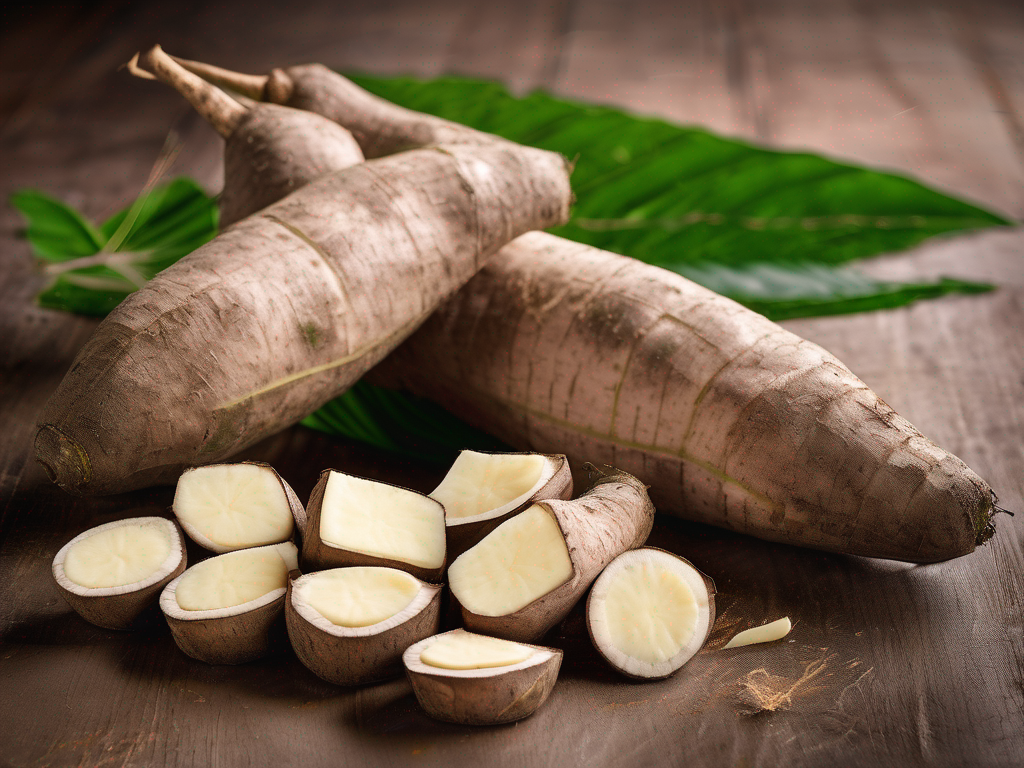
Is Your Cassava Still Safe to Eat? How to Tell If It Has Gone Bad
Get Your Free Food Safety Cheat Sheet
30 most common foods with instant answers. Print it and stick it on your fridge—completely free!
Is Your Cassava Still Safe to Eat? How to Tell If It Has Gone Bad
Cassava, also known as yuca, is a starchy root vegetable that is a staple in many diets around the world. It is versatile, flavorful, and packed with nutrients. However, like any perishable food item, cassava can go bad if not stored and handled properly. In this blog post, we will discuss how to tell if your cassava has gone bad and share some practical tips on food safety and storage. (Cassava)
Signs of Spoiled Cassava
Visual Cues
- Mold: Check for any signs of mold on the surface of the cassava. Mold growth indicates that the cassava has spoiled and should be discarded.
- Discoloration: Look for any dark spots, browning, or discoloration on the cassava. These are signs of decay and spoilage.
- Softness: A healthy cassava root should feel firm and solid. If the cassava feels soft or mushy to the touch, it is likely spoiled.
- Slimy Texture: If the cassava has a slimy or sticky texture, it has likely gone bad and should not be consumed.
Odor
- Foul Smell: Spoiled cassava will emit a foul odor, often described as rotten or sour. If you detect any unpleasant smells coming from the cassava, it is best to throw it away.
Taste
- Bitter Taste: Cassava that has gone bad may have a bitter or unpleasant taste. If you notice any unusual flavors when cooking or eating cassava, it is a sign that it is no longer safe to consume.
Proper Storage Tips for Cassava
To extend the shelf life of your cassava and prevent spoilage, follow these storage tips:
- Choose Fresh Cassava: When purchasing cassava, select roots that are firm, smooth, and free of any blemishes or soft spots.
- Store in a Cool, Dark Place: Keep cassava in a cool, dark place away from direct sunlight. Ideal storage temperature is around 50-59°F (10-15°C).
- Ventilation: Cassava needs good air circulation to prevent mold growth. Store it in a well-ventilated area.
- Avoid Refrigeration: Unlike some other vegetables, cassava does not do well in the refrigerator. Store it at room temperature for optimal freshness.
- Check Regularly: Inspect your cassava regularly for any signs of spoilage and discard any roots that show signs of decay.
Safety Precautions When Handling Cassava
- Peel Thoroughly: Cassava contains cyanogenic glycosides, which can be toxic if consumed in large amounts. To reduce the risk of cyanide poisoning, peel the cassava thoroughly before cooking.
- Cook Before Eating: Cassava should always be cooked before consumption to remove any toxins and make it safe to eat.
- Properly Dispose of Spoiled Cassava: If you suspect that your cassava has gone bad, do not attempt to eat it. Dispose of the spoiled roots in a sealed bag and throw them away in the trash.
Conclusion
In conclusion, it is essential to know how to recognize the signs of spoiled cassava to ensure food safety and prevent foodborne illnesses. By following the tips outlined in this blog post, you can enjoy fresh and safe cassava in your meals. Remember to store cassava properly, check for signs of spoilage, and always cook it before consumption. Stay vigilant and prioritize food safety in your kitchen to enjoy delicious cassava dishes with peace of mind. (Cassava)
Authoritative Food Safety References
These agencies and university labs inform every tip and health precaution we publish.
USDA FoodKeeper – Cold Storage Guidelines
Official refrigerator, freezer, and pantry timelines maintained by the U.S. Department of Agriculture.
Visit USDA FoodKeeperFDA Produce Safety Rule & Grower Guidance
Field-to-fridge handling practices that prevent contamination of fruits, vegetables, and leafy greens.
Visit FDA Produce SafetyCDC Foodborne Illness Prevention Hub
Surveillance-backed guidance on pathogens, symptoms, and steps to reduce foodborne illness risk.
Visit CDC Food SafetyUC Davis Postharvest Technology Center
University research detailing optimal storage atmospheres for produce after harvest.
Visit UC Davis PostharvestPenn State Extension – Home Food Preservation & Safety
Peer-reviewed extension bulletins on safe canning, chilling, and reheating practices.
Visit Penn State ExtensionGet Your Free Food Safety Cheat Sheet
30 most common foods with instant answers. Print it and stick it on your fridge—completely free! Want more? Upgrade to the complete guide with 70+ foods.
Scan your food directly and get instant safety info using our AI-powered camera feature.